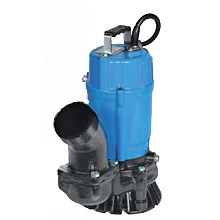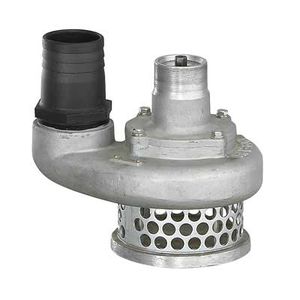Trash Pumps
Trash Pumps are designed to pump large amounts of water that contains hard and soft solids such as mud, leaves, twigs, sand, and sludge. Most devices are portable, heavy-duty Centrifugal Pumps that feature deeper impeller vanes and larger discharge openings than other Pumps. Trash pumps, which are capable of processing materials with suspended particulates that would clog other centrifugal pumps, can move hundreds or even thousands of gallons per minute. Semi-trash pumps, a type of trash pump with a smaller opening, are not designed to handle large solids or high concentrations of solids. Consequently, regular trash pumps are better suited for applications that require the rigorous pumping of solid-laden water or slurries. Because some manufacturers do not separate trash pumps from semi-trash pumps, so a careful analysis of product capabilities is important when selecting devices.
Features
Trash pumps are available with a variety of features. Adjustable speed pumps can operate at speeds selected by an operator while continuous duty pumps maintain performance specifications at 100% duty cycle. Run dry capable pumps can operate without pumped fluid or external lubrication for an extended period of time. Self-priming pumps are designed to create and maintain a vacuum level that is sufficient to draw fluid into the inlet without external assistance. Some sampling pumps include a control panel, battery backup, pressure gauge, strainer or filter, and suction. Other trash pumps are belt-driven, close coupled, plug-in, or portable. Non-clog pumps can move sticky or stringy materials. With frame-mounted devices, the pump end is mounted on a bearing frame that is coupled to the motor.
Specifications
Important specifications for trash pumps include maximum discharge flow, maximum discharge pressure, inlet size, discharge size, and horsepower. Power sources include alternating current (AC), direct current (DC), compressed air, gasoline, diesel fuel, hydraulic systems, natural gas, water, steam, and solar energy. Pumps that do not include a power source typically provide a drive shaft for connection to a motor. Manually powered pumps rely upon hand or foot power.
Applications
Trash pumps are used in a variety of industrial, municipal, and specialty applications. Examples include agriculture and horticulture, construction, flood control, mining, and oil and gas production, and pulp and paper production. Petrochemical and hydrocarbon pumps are rated for materials such as gasoline, kerosene, diesel oil, lubricating oil, paraffin wax, and asphalt.

